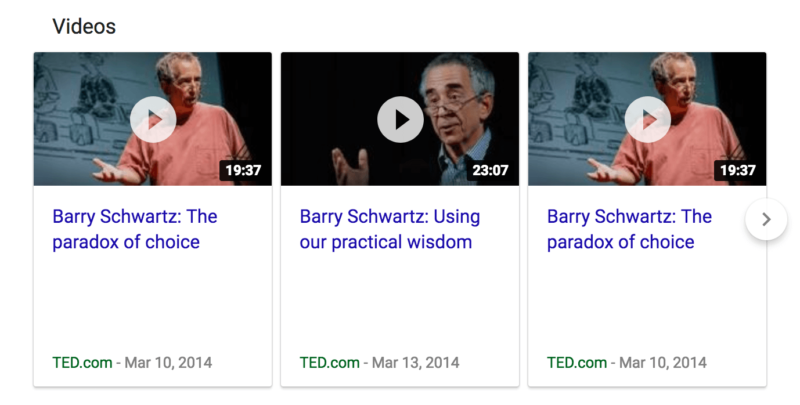Report shows YouTube and Google video ranking algorithms differ widely
A new report shows that there's little correlation between ranking well in YouTube search and doing the same in Google video carousels.

According to a new report released by RankRanger, a good ranking in YouTube search doesn’t guarantee that a video will also rank well in the video carousel in Google search, and vice versa.
This study clearly showed that the YouTube search ranking algorithm is significantly different from the algorithm that Google search uses for videos in the video carousels.
Here is an example of a video carousel in Google in which each of the video results represents a “card.” (Note: I am not the Barry Schwartz in the video thumbnails):
The study looked at 155 video carousel keywords and compared the rank of the top six cards in each carousel within Google search, then compared them to the URLs’ rank in the YouTube search results. The results showed that the first carousel video card had an average rank of position 14 in the YouTube search results. Here is a chart showing by video card placement number how the video ranks in YouTube for the same query:
Even if you grouped the video carousels by packs of three, so the first three videos are shown, and then the next three, the chances of your video showing in the first three cards and also ranking well in YouTube search were not high. The data below shows the percentage of times each Google video carousel card ranks within the certain ranges of position in YouTube:
This confirms a past belief that YouTube and Google search are handled separately and that having a well-ranked video on YouTube might not result in your video ranking well in Google search.
You can learn more about this study and the data, with a lot more examples, at RankRanger.
Related stories
New on Search Engine Land


